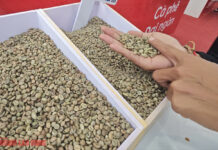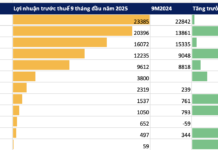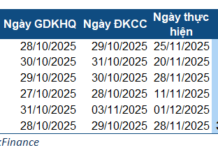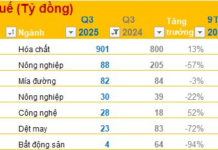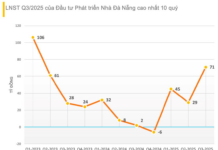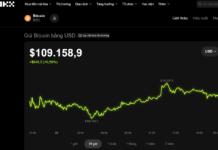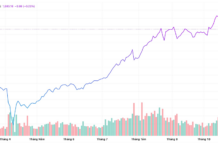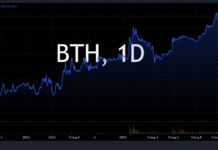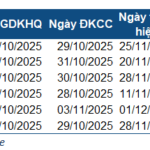PNJ reports revenue growth despite challenging market conditions
Phu Nhuan Jewelry Joint Stock Company (PNJ) has released its financial report for the first four months of the year, posting impressive results. The company’s revenue reached VND 16,049 billion, a 33% increase compared to the same period last year. This growth was driven by increased sales across all channels, with a notable surge in 24K gold revenue, which was almost 80% higher than the previous year, thanks to a vibrant gold bar market.
PNJ’s gross profit and net profit after tax stood at VND 2,723 billion and VND 915 billion, respectively, marking an 18% and 6.5% year-on-year increase. However, the gross profit margin dipped from 19.1% to 17%, while the net profit margin decreased from 7.1% to 5.7%. PNJ’s management attributed these changes to a shift in the sales structure within the retail channel and unpredictable fluctuations in raw material prices and other input factors.
These results come amidst a highly volatile gold market. Gold prices have been consistently breaking records in recent months, peaking at VND 85 million per tael in April and soaring to VND 92 million in May. The gap between domestic and world gold prices also widened, reaching a staggering VND 20 million per tael at its highest point.
Analysts from Tien Phong Securities Company (TPS) attributed the decline in profit margins to PNJ’s focus on jewelry manufacturing and retail, which typically yields higher gross profit margins compared to gold bar trading. However, the sudden surge in gold bar revenue, which now accounts for 42.4% of total revenue compared to 31.2% in the previous year, has constrained the overall profit margin. The profit margins for 24K gold products are extremely low, less than 1%, and this is not PNJ’s primary business segment.
TPS experts also pointed out that consumers’ preference for gold bars as a potential investment option during periods of low bank interest rates, rather than purchasing jewelry, has impacted PNJ’s profit margins. This shift has prompted the company to allocate additional funds for promotional and marketing programs to attract new customers and retain existing ones, further affecting profit margins.
Echoing this sentiment, analysts from Mirae Asset Vietnam Securities Company highlighted that rising gold prices would exert pressure on PNJ’s gross profit margin, as the company cannot always pass on the increased costs to customers. Moreover, higher gold raw material prices lead to more expensive finished jewelry, which can deter purchases and result in lower sales volumes.
PNJ’s strategy for market share expansion
Despite short-term challenges, PNJ’s management and analysts remain optimistic about the long-term growth potential of the jewelry retail market. While the market is expected to face difficulties in the near term, with a projected recovery of only 5% compared to the previous year, the mid to long-term prospects are promising.

PNJ boasts an impressive network of 403 physical stores across Vietnam as of April 2024 (Photo: Do Truong)
PNJ’s key to unlocking growth in a challenging business environment lies in its position as the leading retailer in Vietnam’s jewelry market. The company has successfully built a strong and trusted brand over its 36-year history, evolving from a small business with 20 employees to a leading jewelry retailer with 403 stores across 57 out of 63 provinces and cities as of April. While PNJ only opened one new store in the first quarter, focusing on the peak business season, SSI Research forecasts an acceleration in the second half of the year, with plans to open an additional 35 stores.
PNJ’s representative emphasized the significance of brand-building activities in driving business growth. This confidence stems from the company’s successful track record of implementing customer engagement programs and shaping consumer habits during special occasions, which have significantly contributed to profits in recent years.
Additionally, PNJ’s management underscored the importance of diversifying into new business areas, experimenting with modern customer engagement models, and forming a comprehensive ecosystem to maintain its market leadership in the long run. The company is also focused on enhancing its design capabilities, exploring new production technologies, and expanding its product portfolio to cater to diverse customer segments.
Mr. Le Tri Thong, Vice Chairman of the Board of Directors and CEO of PNJ, expressed optimism about the company’s growth prospects. He stated that if market conditions improve in the third and fourth quarters of 2024, with a strong recovery and higher consumer demand, achieving an 18% growth rate is within reach. PNJ has also prepared a positive scenario in anticipation of a market upturn.
“Jewelry sales currently lead the way at PNJ. Our management recognizes the potential of the online segment and is directing our efforts there. Currently, 40% of our customers interact with us through online channels, whether it’s for research, social media engagement, or direct online purchases,” added the PNJ representative.


